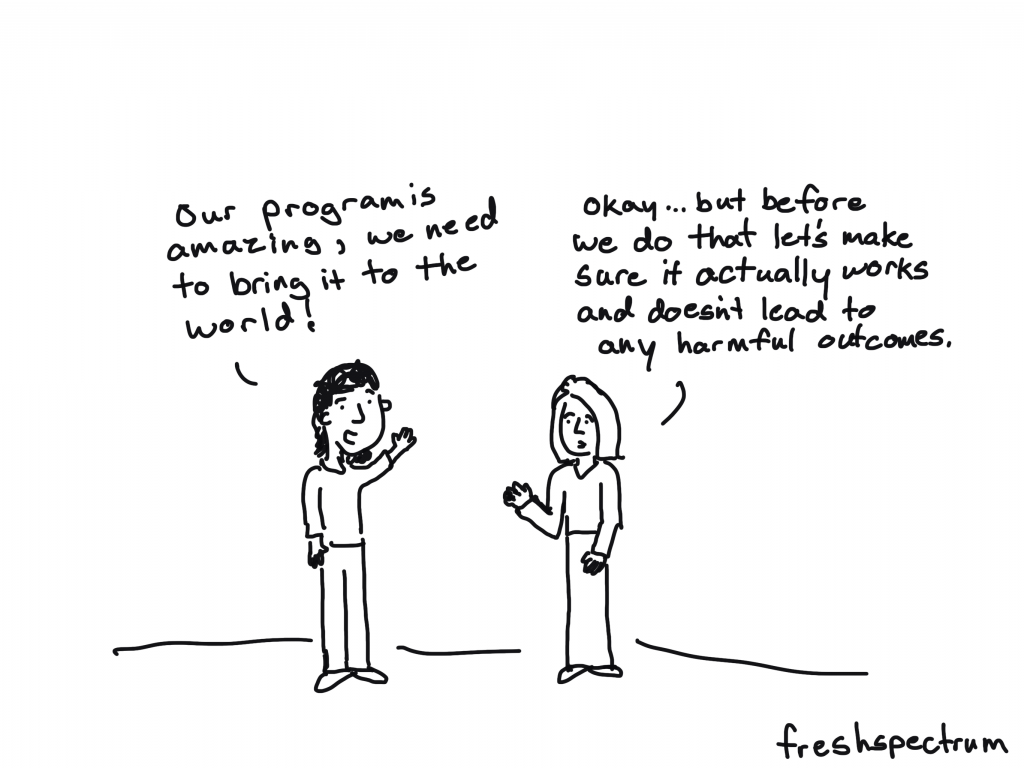This is an Eval Central archive copy, find the original at freshspectrum.com.
This is a series of posts providing quick of overviews of important topics in research and evaluation. Each post in this series will include 3 cartoons from my archives along with 3 links to recommended resources.
Summative Evaluation can be the Scary One for Program People

BOTTOM LINE – Summative evaluation requires rigorous evidence because the stakes are high. The evaluation data must be high quality and credible to external stakeholders interested in the model.
Evaluation Flash Cards [PDF] – by Michael Quinn Patton for Otto Bremer Trust
Making Sure that a Program Works

An evaluation is a systematic and purposeful collection and analysis of data used to document the effectiveness of programs or interventions. Rigorous evaluation can determine if programs or interventions should be maintained, improved, or eliminated. The term summative evaluation (sometimes referred to as ex-post evaluation or outcome evaluation) was first introduced in the mid-1960s by Lee Cronbach and Michael Scriven and refers to a process of evaluating a program’s or intervention’s impact or efficacy through careful examination of program design and management. It is often used to assess the accountability of a program or intervention.
Summative Evaluation – from The SAGE Encyclopedia of Educational Research, Measurement, and Evaluation
Summative, Formative, Developmental Evaluation

Distinguished evaluation theorist and practitioner Bob Stake has explained, “When the cook tastes the soup, that’s formative; when the guests taste the soup, that’s summative” (quoted in Scriven, 1991, p. 169). More generally, anything done to the soup during preparation in the kitchen is improvement oriented; when the soup is served, summative judgment is rendered by the guests who consume the soup. And what of developmental evaluation in this metaphor?
Developmental evaluation begins when, before cooking, the chef goes to the market to see what vegetables are the freshest, what fish has just arrived, and meanders through the market considering possibilities, thinking about who the guests will be, what they were served last time, what the weather is like, and considers how adventurous and innovative to be with the meal.
Michael Quinn Patton from his book on Developmental Evaluation